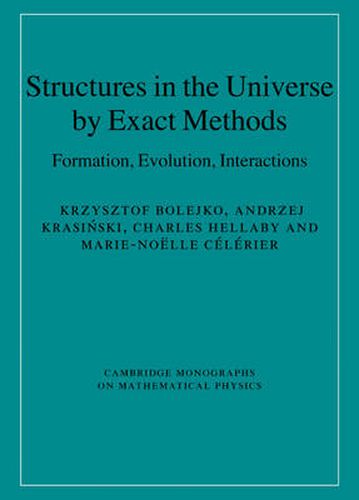Readings Newsletter
Become a Readings Member to make your shopping experience even easier.
Sign in or sign up for free!
You’re not far away from qualifying for FREE standard shipping within Australia
You’ve qualified for FREE standard shipping within Australia
The cart is loading…






As the structures in our Universe are mapped out on ever larger scales, and with increasing detail, the use of inhomogeneous models is becoming an essential tool for analyzing and understanding them. This book reviews a number of important developments in the application of inhomogeneous solutions of Einstein’s field equations to cosmology. It shows how inhomogeneous models can be employed to study the evolution of structures such as galaxy clusters and galaxies with central black holes, and to account for cosmological observations like supernovae dimming, the cosmic microwave background, baryon acoustic oscillations or the dependence of the Hubble parameter on redshift within classical general relativity. Whatever “dark matter’ and "dark energy’ turn out to be, inhomogeneities exist on many scales and need to be investigated with all appropriate methods. This book is of great value to all astrophysicists and researchers working in cosmology, from graduate students to academic researchers.
$9.00 standard shipping within Australia
FREE standard shipping within Australia for orders over $100.00
Express & International shipping calculated at checkout
As the structures in our Universe are mapped out on ever larger scales, and with increasing detail, the use of inhomogeneous models is becoming an essential tool for analyzing and understanding them. This book reviews a number of important developments in the application of inhomogeneous solutions of Einstein’s field equations to cosmology. It shows how inhomogeneous models can be employed to study the evolution of structures such as galaxy clusters and galaxies with central black holes, and to account for cosmological observations like supernovae dimming, the cosmic microwave background, baryon acoustic oscillations or the dependence of the Hubble parameter on redshift within classical general relativity. Whatever “dark matter’ and "dark energy’ turn out to be, inhomogeneities exist on many scales and need to be investigated with all appropriate methods. This book is of great value to all astrophysicists and researchers working in cosmology, from graduate students to academic researchers.